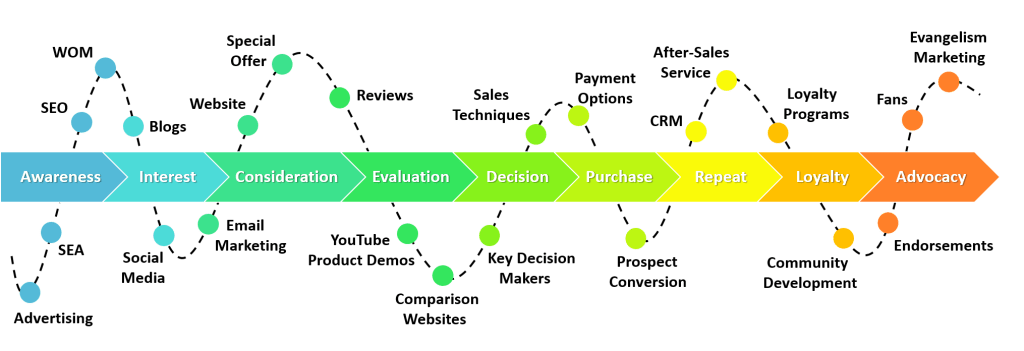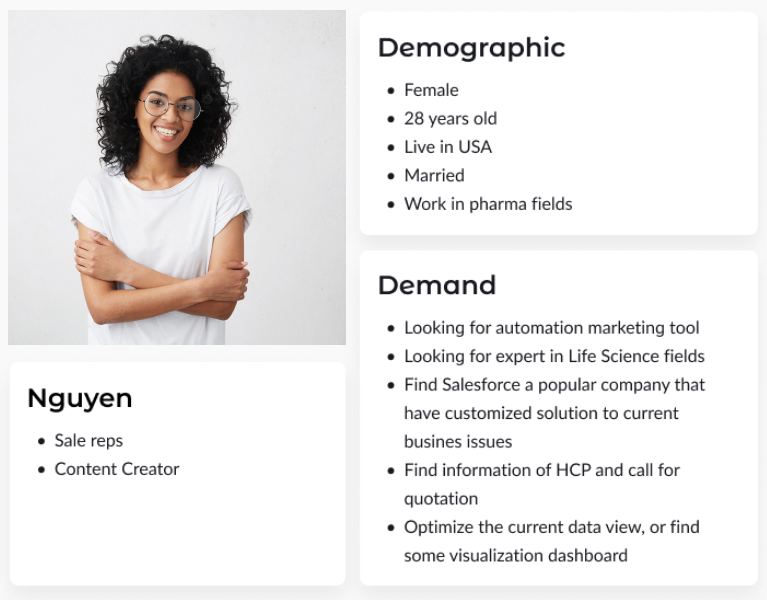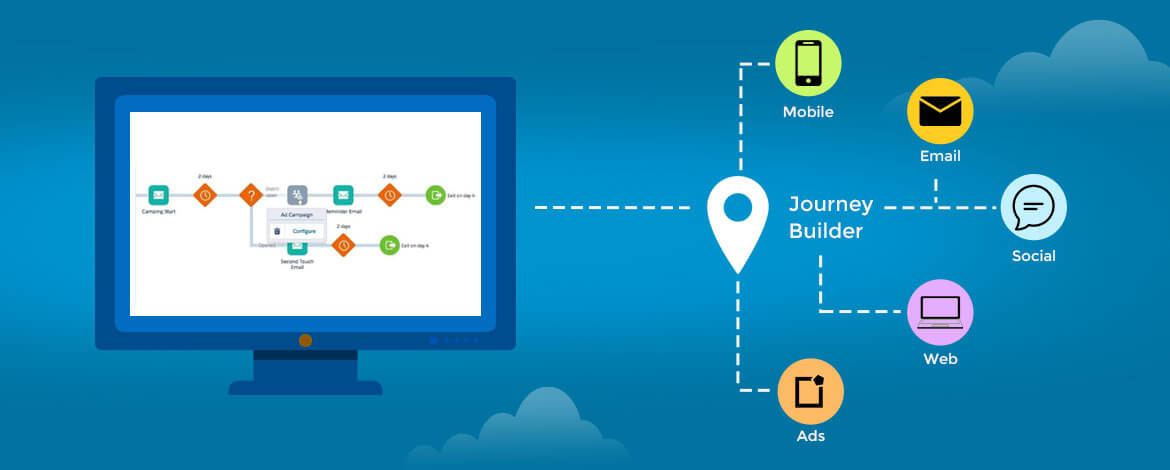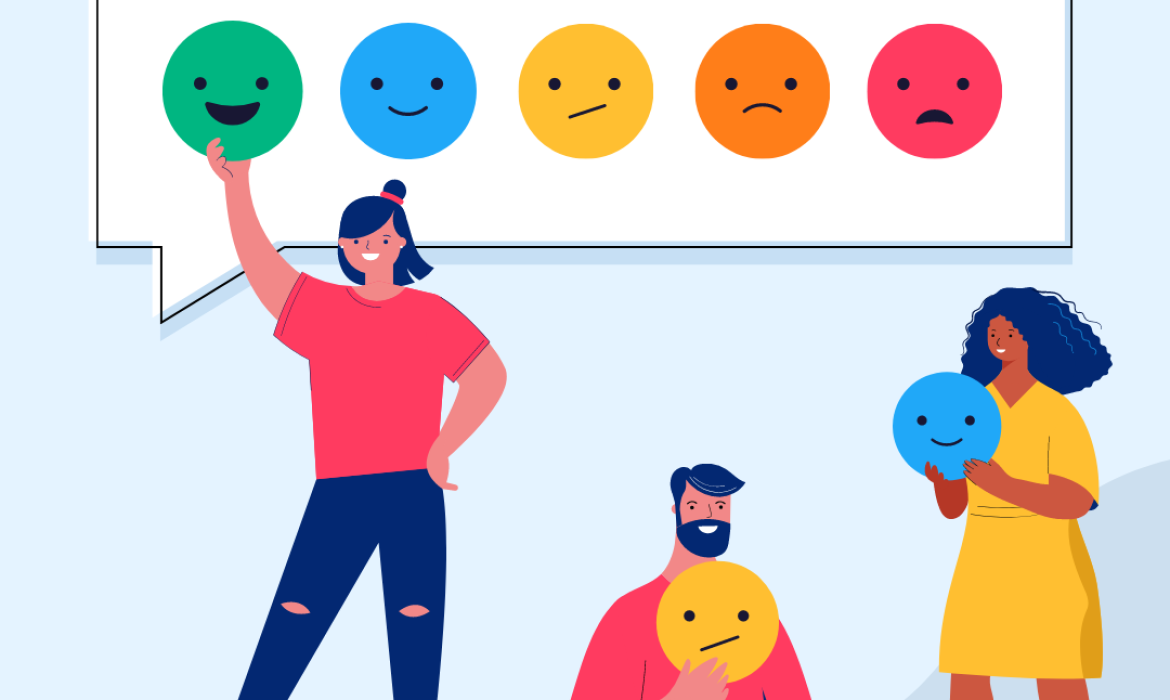When converting sales, understanding customer behaviors and desires is the key strategy. Thanks to that knowledge, marketers can apply effective tactics to encourage customers to keep moving forward in their buyer cycle. Stream Hub will introduce the term customer journey in the article and how we can help you accelerate your business by Salesforce Marketing Cloud Journey Builder.
>> Read more: Chosing the most affordable WordPress website design service Melbourne
What is the customer journey?
The customer journey is all interactions with a company’s brands, products, or services across all touchpoints and channels.
Customers experience several touchpoints, many stages from stranger to buyer, and then enthusiastically support the brand.
Why Does Your Business Need a Customer Journey?
Customer Experience is the ultimate goal that every business strives for. It is not the tactics that grow the large awareness of the business, but how the business learns from the mistake, and the abandoned engagement slowly improves customer interaction.
Customer journey helps the business list every touchpoint with its customers. Then, it gradually improves by meeting the global standard.
The other benefits of implementing a customer journey
- Brand consideration is “Mapping digital customers to real ones.”
- Purchase decision: for example, “100% free quotation.”
- Customer loyalty “CRM is YOUR customer-centric pool, and Stream Hub helps you ANNUALLY manage and optimize it”

More detailed customer journey
What’s included in a customer journey map?
There are 3 important concepts in a customer journey map:
- Pain Points: all start with a WHY; WHY does your customer need your product or service? Identifying the paint points can help business categorize their customer into the appropriate pool for better interactions and solutions.
- Solutions: knowing the WHY, you can start with the HOW business can better approach: whether it is a free demo or a quick call of confirmation
- Touchpoints: finally, it is the WHAT, what a customer does in each stage of your journey. What do they want? What they expect from your product, service
Step-by-step Guide to Creating a Customer Journey Map by Journey Builder in the Life Science industry
In the example, Stream Hub will explain a sample case of how HCP buys healthcare products, services, and solutions from a sales rep’s perspective.
- What to measure for the map.
The business must decide what you want to measure and what goal you’re trying to achieve. For example:
- Getting called 3 times monthly
- Profile your customer personas and define their goals.
Some examples of good questions to ask are:
- What first attracted you to our website?
- What are the goals you want to achieve with our company?
- What problems are you trying to solve?
- Have you ever left a quotation? If so, what was your deciding factor? Have you ever interacted with our website to make a purchase but decided not to? If so, what led you to this decision?
- If so, how helpful was it, on a scale of 1 to 10?
- Is there any way that we can further support you to make your process easier?
The result is a persona table below:

- Highlight your target customer personas.
Compile audience data to narrow in on details like:
- Age
- Location
- Language
- patterns Interests Challenges
- Stage of life For B2B: The size of businesses and who makes purchasing decisions
- List out all the touchpoints.
– Offline event
- Identify the elements you want your map to show.
- Presentation for HCP
- Marketing email
- Offline event
- Take the customer journey yourself with Journey Builder.
- Continuously upgrade the journey
- Find out the low metrics in the dashboard (if you use SFMC), or the business can ask the customer how they perform
What is Journey Builder?
Journey Builder is a campaign planning and execution tool in Salesforce Marketing Cloud, which enables campaigns that guide customers through a series of interactions.
Have all the customers come to the event? Stream Hub can help you build a customized journey that presents a pleasant experience when engaging with the brand.
How to take the customer journey yourself?
Understanding your customer persona (what they expect) and how the business performs in the events. The real step is to segment the user base on criteria, and customized interaction with them (by email, for chat channel)
For the example above, segmentation and customized email are implemented to meet the expectations of the key account manager. The journey can be viewed as follows:

Different types of Journeys can be used based on your business customer persona:
- Multi-step journey: create different messages across different channels
- Single send journey: send a single personalized message across different channels
- Transactional send journey: triggered once an event occurs. Trigger personalized transactional messages with an event API
After the event or when you get the result (via the dashboard or an Excel file), the business knows what the problem is and continuously upgrades the journey.

Journey builder features
Journey Builder empowers you to guide customers on 1:1 journeys to deliver the right digital marketing solution with the following journey builder activities:
- journey builder entry source: where your customers entering this journey come from
- path optimizer: tests which journey the business thinks is suitable for customers based on email engagement metrics or other outcomes
- wait by attribute: to ensure that messages are sent at a specific time
- decision split: evaluates contact journey data, then sends each contact down a path based on the filter criteria you set
- engagement split: activity sends contacts down a Yes or No path based on whether they open or click a link in an email or the email bounces
Once you fully understand your customer’s experience with your business, you can delight them at every stage in their buying journey. Many factors can affect this journey, including customer pain points and your business touchpoints and processes.
If you would like to find out more about Salesforce, its CRM, and cloud platforms, leave a comment here:




